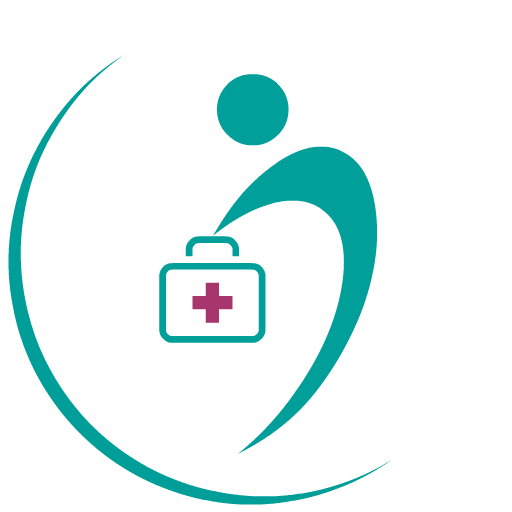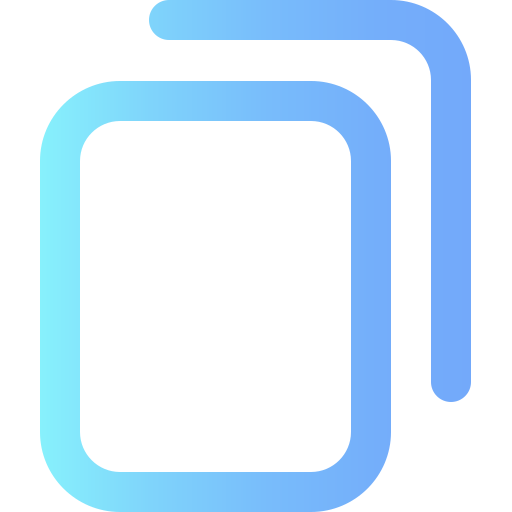Type 1 diabetes, also known as juvenile diabetes or insulin dependent diabetes, is a chronic disease.
It occurs when the pancreas doesn't produce enough insulin or the cells don't respond to insulin properly. This causes high levels of glucose in the blood. The most common symptoms include frequent urination, increased thirst, fatigue, weight loss, blurred vision and slow healing wounds.
Even after a lot of research, type 1 diabetes has no cure.
Treatment is directed toward managing the amount of sugar in the blood using insulin, diet and lifestyle to prevent complications.
Symptoms
Type 1 diabetes symptoms can appear suddenly and may include:
Feeling more thirsty than usual
Urinating a lot
Bed-wetting in children who have never wet the bed during the night
Feeling very hungry
Losing weight without trying
Feeling irritable or having other mood changes
Feeling tired and weak
Having blurry vision
Causes
The exact cause of type 1 diabetes is unknown.
Type 1 Diabetes is caused when your body doesn't produce enough insulin. Insulin is needed to convert sugar into energy.
Autoimmune diseases occur when the body attacks itself. In type 1 diabetes, the body's immune system mistakenly identifies the beta cells in the pancreas as foreign invaders and destroys them.
Other causes include:
Genetics
Exposure to viruses and other environmental factors
The role of insulin
Once a large number of islet cells are destroyed, the body will produce little or no insulin. Insulin is a hormone that comes from a gland behind and below the stomach (pancreas).
The pancreas puts insulin into the bloodstream.
Insulin travels through the body, allowing sugar to enter the cells.
Insulin lowers the amount of sugar in the bloodstream.
As the blood sugar level drops, the pancreas puts less insulin into the bloodstream.
The role of glucose
Glucose is the main source of energy for the cells that make up muscles and other tissues.
Glucose comes from two major sources: food and the liver.
Sugar is absorbed into the bloodstream, where it enters cells with the help of insulin.
The liver stores glucose in the form of glycogen.
When glucose levels are low, such as when you haven't eaten in a while, the liver breaks down the stored glycogen into glucose. This keeps glucose levels within a typical range.
In type 1 diabetes, there's no insulin to let glucose into the cells. Because of this, sugar builds up in the bloodstream. This can cause life-threatening complications.
Prevention
There's no known way to prevent type 1 diabetes.
The only way to treat type 1 diabetes is through daily injections of insulin. However, there is currently no cure for type 1 diabetes.
Researchers are working on developing new treatments to help patients manage their blood sugar levels.
Diagnosis
Diagnostic tests include:
Glycated hemoglobin (A1C) test. This blood test shows your average blood sugar level for the past 2 to 3 months. It measures the amount of blood sugar attached to the oxygen-carrying protein in red blood cells (hemoglobin). The higher the blood sugar levels, the more hemoglobin you'll have with sugar attached. An A1C level of 6.5% or higher on two separate tests means you have diabetes.
If the A1C test isn't available, or if you have certain conditions that can make the A1C test inaccurate such as pregnancy or an uncommon form of hemoglobin (hemoglobin variant) in such cases there are other tests:
Random blood sugar test. A blood sample will be taken at a random time and may be confirmed by additional tests. Blood sugar values are expressed in milligrams per deciliter (mg/dL) or millimoles per liter (mmol/L). No matter when you last ate, a random blood sugar level of 200 mg/dL (11.1 mmol/L) or higher suggests diabetes.
Fasting blood sugar test. A blood sample will be taken after you don't eat (fast) overnight. A fasting blood sugar level less than 100 mg/dL (5.6 mmol/L) is healthy. A fasting blood sugar level from 100 to 125 mg/dL (5.6 to 6.9 mmol/L) is considered prediabetes. If it's 126 mg/dL (7 mmol/L) or higher on two separate tests, you have diabetes.
If you're diagnosed with diabetes, your provider may also run blood tests. These will check for autoantibodies that are common in type 1 diabetes. The tests help your provider decide between type 1 and type 2 diabetes when the diagnosis isn't certain.
The presence of ketones, byproducts from the breakdown of fat in your urine also suggests type 1 diabetes, rather than type 2.
After the diagnosis
After diagnosis, you'll regularly visit your provider. During these visits, your provider will check your A1C levels. Your target A1C goal may vary depending on age and various other factors, so your provider will adjust your treatment plan accordingly.
A1C testing shows how well the treatment plan is working. It's important to keep track of your A1C levels because they help determine whether you're taking enough insulin, eating healthy foods, exercising and monitoring your blood sugar closely.
You'll also get blood and urine tests done. These tests will measure your cholesterol, thyroid, liver and kidney functions, as well as your blood pressure. Your provider will also check the sites where you inject insulin and give you your meals.
Risk factors
Some factors that can raise your risk for type 1 diabetes include:
Family history. Anyone with a parent or sibling with type 1 diabetes has a slightly higher risk of developing the condition.
Genetics. Having certain genes increases the risk of developing type 1 diabetes.
Geography. The number of people who have type 1 diabetes tends to be higher as you travel away from the equator.
Age. Type 1 diabetes can appear at any age, but it appears at two noticeable peaks. The first peak occurs in children between 4 and 7 years old. The second is in children between 10 and 14 years old.
Complications
Over time, type 1 diabetes complications can affect major organs in the body. These organs include the heart, blood vessels, nerves, eyes and kidneys. Having a normal blood sugar level can lower the risk of many complications.
Diabetes complications can lead to disabilities or even threaten your life.
Heart and blood vessel disease. Diabetes increases the risk of some problems with the heart and blood vessels. These include coronary artery disease with chest pain (angina), heart attack, stroke, narrowing of the arteries (atherosclerosis) and high blood pressure.
Nerve damage (neuropathy). Too much sugar in the blood can injure the walls of the tiny blood vessels (capillaries) that feed the nerves. This is especially true in the legs. This can cause tingling, numbness, burning or pain. This usually begins at the tips of the toes or fingers and spreads upward. Poorly controlled blood sugar could cause you to lose all sense of feeling in the affected limbs over time.
Damage to the nerves that affect the digestive system can cause problems with nausea, vomiting, diarrhea or constipation. For men, erectile dysfunction may be an issue.Kidney damage (nephropathy). The kidneys have millions of tiny blood vessels that keep waste from entering the blood. Diabetes can damage this system. Severe damage can lead to kidney failure or end-stage kidney disease that can't be reversed. End-stage kidney disease needs to be treated with mechanical filtering of the kidneys (dialysis) or a kidney transplant.
Eye damage. Diabetes can damage the blood vessels in the retina (part of the eye that senses light) (diabetic retinopathy). This could cause blindness. Diabetes also increases the risk of other serious vision conditions, such as cataracts and glaucoma.
Foot damage. Nerve damage in the feet or poor blood flow to the feet increases the risk of some foot complications. Left untreated, cuts and blisters can become serious infections. These infections may need to be treated with toe, foot or leg removal (amputation).
Skin and mouth conditions. Diabetes may leave you more prone to infections of the skin and mouth. These include bacterial and fungal infections. Gum disease and dry mouth also are more likely.
Pregnancy complications. High blood sugar levels can be dangerous for both the parent and the baby. The risk of miscarriage, stillbirth and birth defects increases when diabetes isn't well-controlled. For the parent, diabetes increases the risk of diabetic ketoacidosis, diabetic eye problems (retinopathy), pregnancy-induced high blood pressure and preeclampsia.
Treatment
Treatment for type 1 diabetes includes:
Taking insulin
Counting carbohydrates, fats and protein
Monitoring blood sugar often
Eating healthy foods
Exercising regularly and keeping a healthy weight
The goal is to keep the blood sugar level as close to normal as possible to delay or prevent complications. Generally, the goal is to keep the daytime blood sugar levels before meals between 80 and 130 mg/dL (4.44 to 7.2 mmol/L). After-meal numbers should be no higher than 180 mg/dL (10 mmol/L) two hours after eating.
Insulin and other medications
Anyone who has type 1 diabetes needs insulin therapy throughout their life.
There are many types of insulin, including:
Short-acting insulin. Sometimes called regular insulin, this type starts working around 30 minutes after injection. It reaches peak effect at 90 to 120 minutes and lasts about 4 to 6 hours. Examples are Humulin R, Novolin R and Afrezza.
Rapid-acting insulin. This type of insulin starts working within 15 minutes. It reaches peak effect at 60 minutes and lasts about 4 hours. This type is often used 15 to 20 minutes before meals. Examples are glulisine (Apidra), lispro (Humalog, Admelog and Lyumjev) and aspart (Novolog and FiAsp).
Intermediate-acting insulin. Also called NPH insulin, this type of insulin starts working in about 1 to 3 hours. It reaches peak effect at 6 to 8 hours and lasts 12 to 24 hours. Examples are insulin NPH (Novolin N, Humulin N).
Long- and ultra-long-acting insulin. This type of insulin may provide coverage for as long as 14 to 40 hours. Examples are glargine (Lantus, Toujeo Solostar, Basaglar), detemir (Levemir) and degludec (Tresiba).
Blood sugar monitoring
Depending on the type of insulin therapy you select or need, you may have to check and record your blood sugar level at least four times a day.
Even if you take insulin and eat on a strict schedule, blood sugar levels can change. You'll learn how your blood sugar level changes in response to food, activity, illness, medications, stress, hormonal changes and alcohol.
Continuous glucose monitoring
Continuous glucose monitoring (CGM) monitors blood sugar levels. It may be especially helpful for preventing low blood sugar. These devices have been shown to lower A1C.
Continuous glucose monitors attach to the body using a fine needle just under the skin. They check blood glucose levels every few minutes.
Closed loop system
The Food and Drug Administration has approved two artificial pancreases for people with type 1 diabetes who are age 14 and older.
This is also called a closed loop system. The device, which is implanted in the body, links a continuous glucose monitor to an insulin pump. The monitor checks blood sugar levels every five minutes. The device automatically delivers the correct amount of insulin when the monitor shows that it's needed.
Other medications
Other medications also may be prescribed for people with type 1 diabetes, such as:
High blood pressure medications. Your provider may prescribe angiotensin-converting enzyme (ACE) inhibitors or angiotensin II receptor blockers (ARBs) to help keep your kidneys healthy. These medications are recommended for people with diabetes who have blood pressures above 140/90 millimeters of mercury (mm Hg).
Aspirin. Your provider may recommend you take baby or regular aspirin daily to protect your heart. Your provider may feel that you have an increased risk of a cardiovascular event. Your provider will discuss the risk of bleeding if you take aspirin.
Cholesterol-lowering drugs. Cholesterol guidelines are stricter for people with diabetes because of their higher risk of heart disease.
The American Diabetes Association recommends that low-density lipoprotein (LDL, or "bad") cholesterol be below 100 mg/dL (2.6 mmol/L). High-density lipoprotein (HDL, or "good") cholesterol is recommended to be over 50 mg/dL (1.3 mmol/L) in women and over 40 mg/dL (1 mmol/L) in men. Triglycerides, another type of blood fat, should be less than 150 mg/dL (1.7 mmol/L).
Blogs
Stay connected to health experts and read what they have to say via DocSmart.
Please sign up to create your own blog





